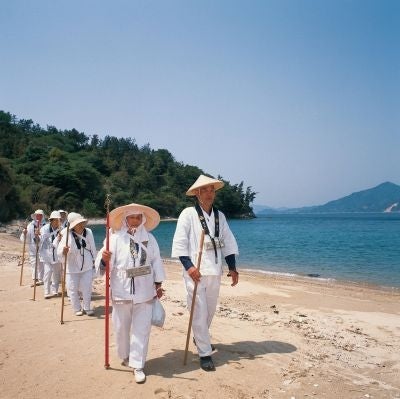The election of a new prime minister of Japan has put a spring into the step of pilgrims on the ancient pilgrimage route that roams across the island of Shikoku, with hikers from across the world tackling the 1,400-km trek.
Naoto Kan took office in June and is well known in Japan for undertaking the daunting pilgrimage - although walkers are not required to complete the entire distance in one go - after resigning from a previous cabinet position in 2004 for failing to pay his national pension contributions.
Kan has completed 53 of the 88 sections of the route, the most recent in the summer of 2008. Now that he is prime minster, it is likely that affairs of state will keep Kan too occupied to complete the remaining stretches - although the revolving door nature of Japanese politics means he may be replaced sooner rather than later and suddently find himself with time on his hands again.
Shikoku is the smallest of Japan's four main islands and the 88 Buddhist temples across the island were built in honor of the monk Kukai, who lived between 774 and 835 AD. The founder of the Shingon sect of Buddhism, he studied in China before returning to Japan and creating the pilgrimage.
Those undertaking the challenge - called ohenro-san - carry a book that is stamped after they worship at each of the temples on the route.
Traditionally, they wear conical grass hats and a white kimono and carry a walking stick that can be bought at the first temple on the journey, Ryozenji in the town of Naturo.
"We are always busy with pilgrims, but I do think that we have been more busy since the new prime minister took over," Chie Kinoshita, a spokeswoman for the temple, told Relaxnews.
"That, plus the start of the summer holidays are having an impact.
"And yes, there are a lot of foreigners coming here as well - today we have had visitors from Belgium, Spain and China already," she said.
The journey usually takes 45 days to complete on foot - but the convenience of tourist buses has reduced that time frame dramatically.
JR
Subscribe to Independent Premium to bookmark this article
Want to bookmark your favourite articles and stories to read or reference later? Start your Independent Premium subscription today.


Join our commenting forum
Join thought-provoking conversations, follow other Independent readers and see their replies